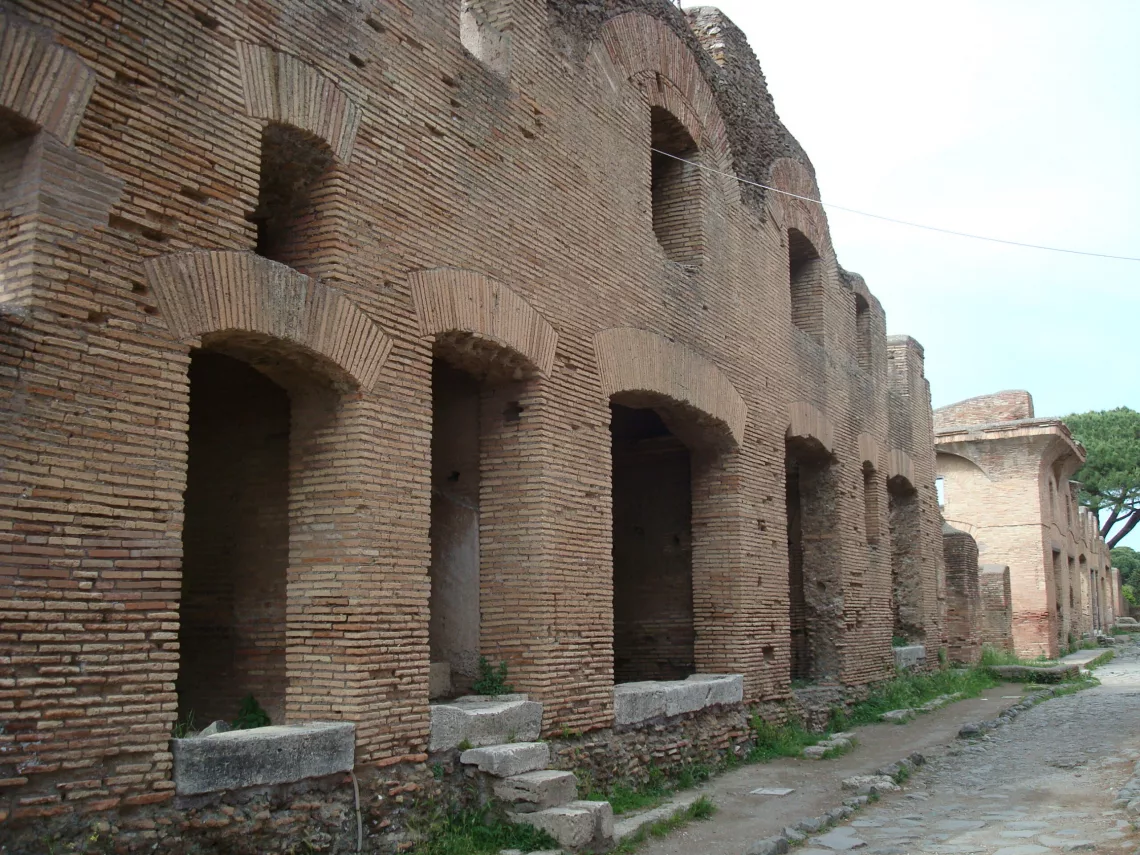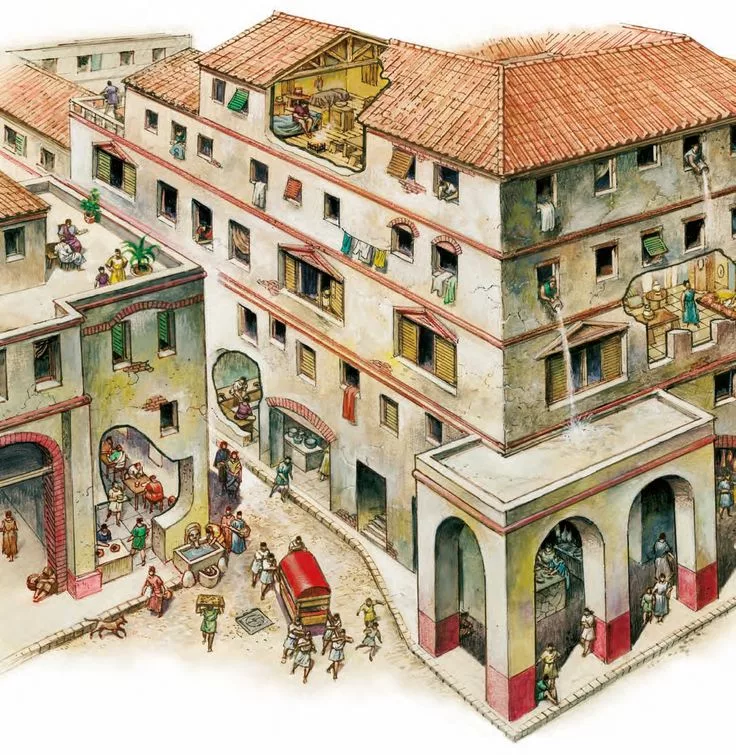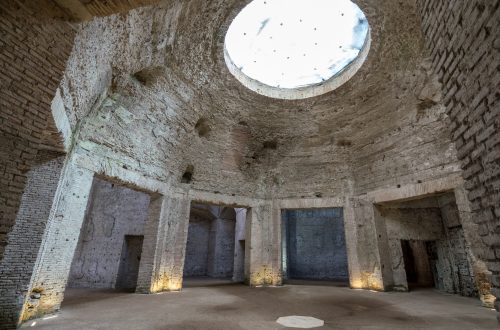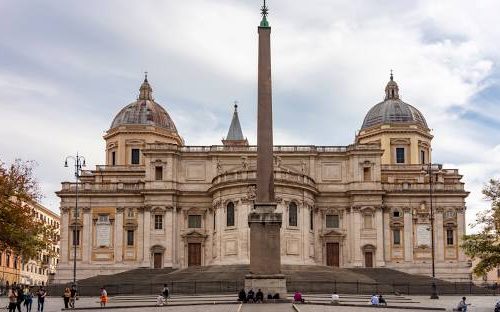
The Roman Insulae
The Roman Insulae: Everyday Life in Ancient Apartment Buildings
In ancient Rome, not everyone lived in grand villas or elegant domus. Most people—artisans, workers, and lower-class citizens—lived in tall, crowded apartment buildings called insulae, meaning “islands” in Latin. These were the backbone of urban life: busy, noisy, and often chaotic, but essential to a growing metropolis like Rome.
Imagine walking through a Roman street. On both sides, you’d see three, four, even six-story buildings towering above. On the ground floor, shopkeepers sold bread, wine, or oil from open-fronted stores, called tabernae. Above them, steep staircases led to rows of small, windowless apartments. The higher you went, the smaller and poorer the rooms became.
These apartments were built quickly and often with cheap materials like wood, brick, and concrete. Fires were common, and collapses weren’t rare. That’s why emperors like Augustus later introduced laws to limit their height.
Living in an insula was tough. Water had to be carried up from street fountains, and toilets were shared or absent. The buildings were noisy and overcrowded. But for many Romans, this was home.
You can still see some traces of this world today. In Ostia Antica, Rome’s ancient port city, entire blocks of insulae remain standing. You can walk into rooms, see mosaics, and imagine the daily lives of those who lived there. In the center of Rome, the Insula dell’Ara Coeli preserves part of a four-story apartment block with reconstructed wooden balconies.
The insulae tell the story of a Rome that was alive with people of every kind—busy, practical, and full of energy. They remind us that ancient history wasn’t just about emperors and temples, but about where and how ordinary people lived.


Find a Hotel in Rome
Find Transportation
![]()




